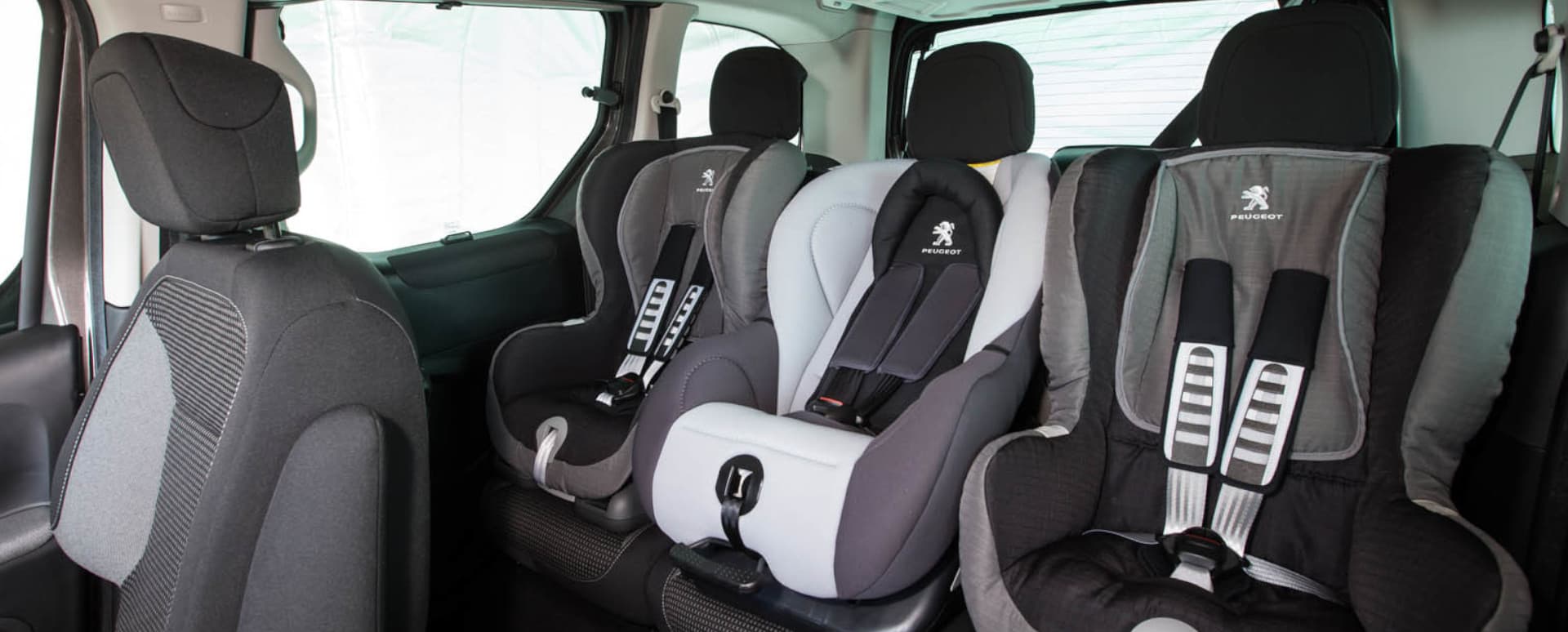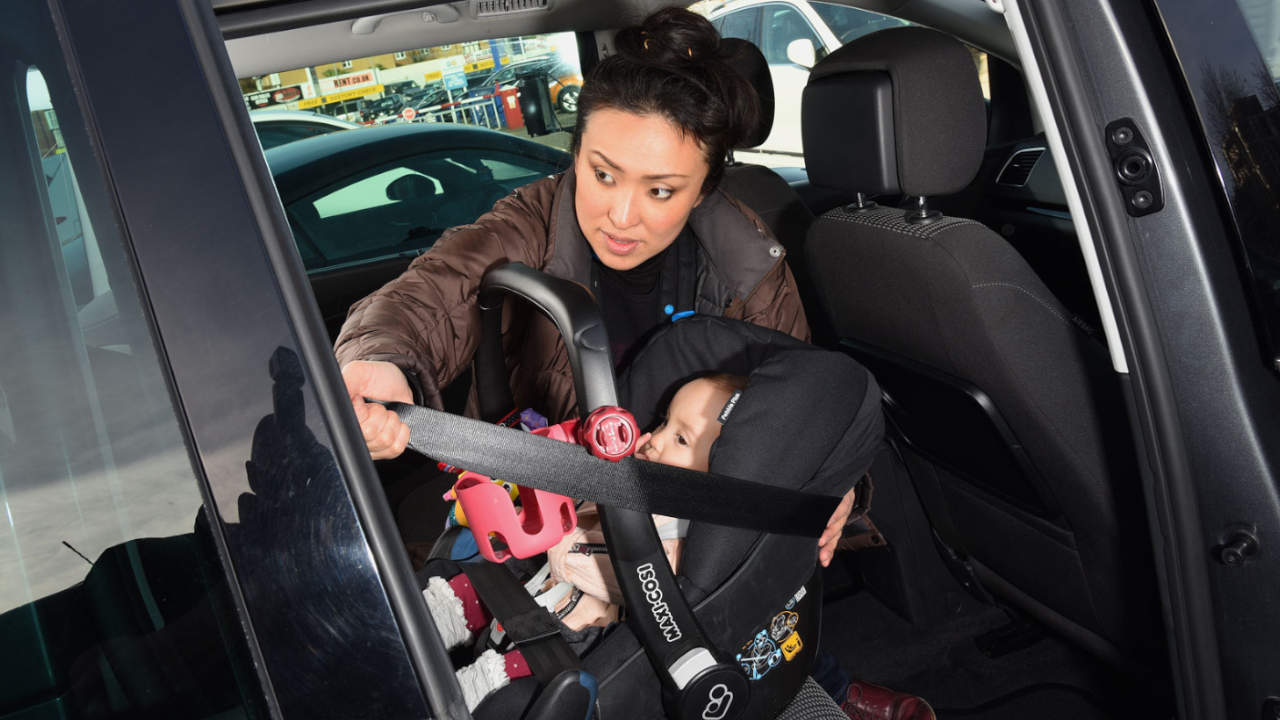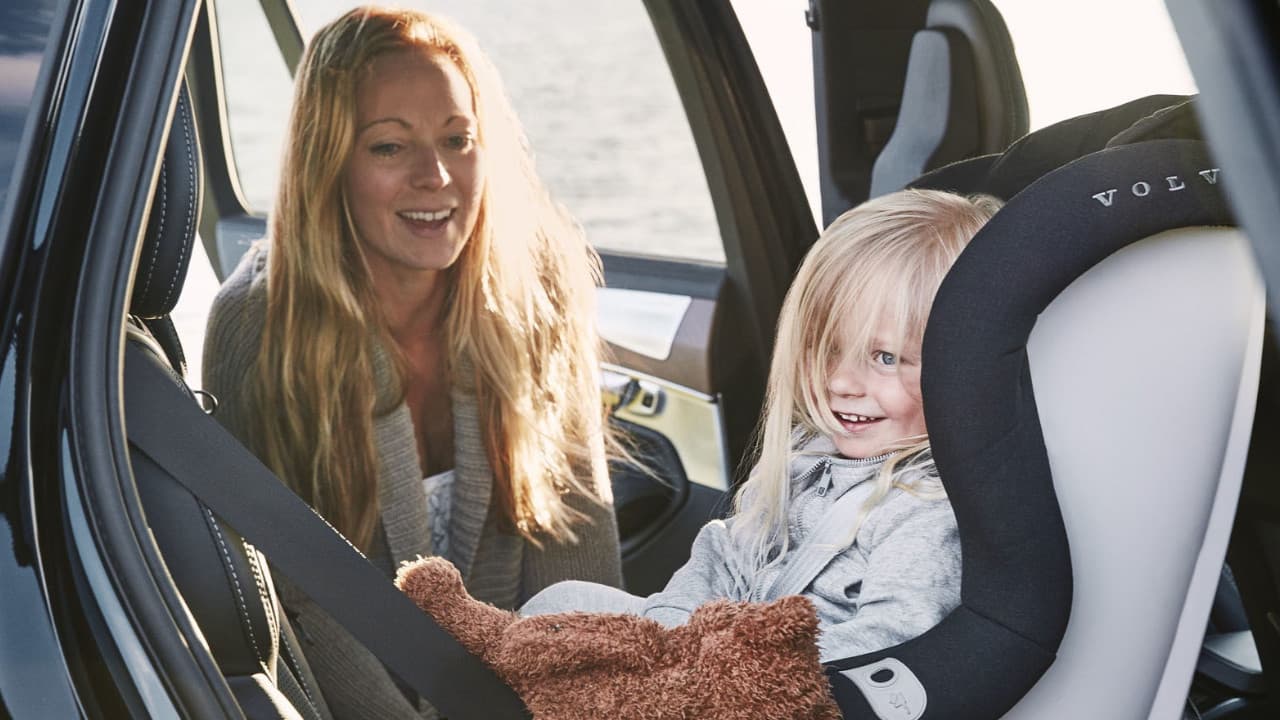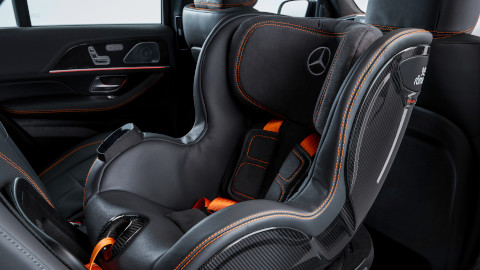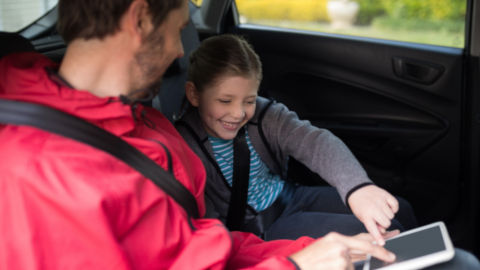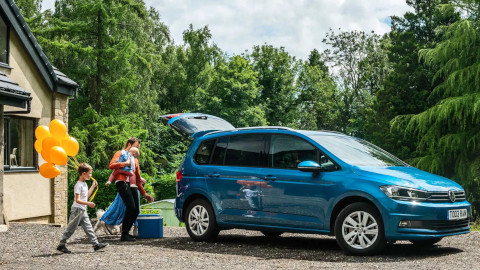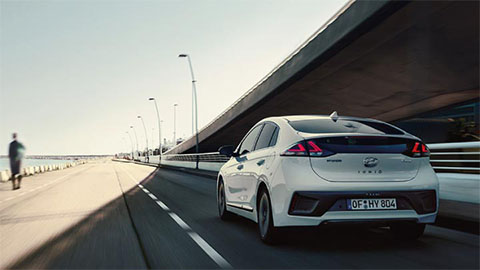Why are child car seats important?
Child car seats are essential and are a legal requirement for you to use when driving with children in your car. They help to protect your child and keep them safe whilst driving, providing adding security if you were to be in an accident.
There are different types of car seats and varying sizes, but they all serve the same purpose; keeping your child safe in the car.
It can be a bit daunting thinking about car seats as there's a lot to think about, and you want to make sure you're fitting them correctly so that your child is safe, so we've put together this handy guide to help you through it.
- Different types of car seats
- How to fit a car seat with a seatbelt
- How to fit a car seat with ISOFIX
- Rules on children's car seats
Different types of car seats
With car seats, you get all different types and sizes and the right one to get will be completely dependent on your child. You can use the table below to help you determine which car seat you need to get, depending on your child's age and weight.
| Group | Child's Weight | Age of Child | Seat |
|---|---|---|---|
| 0 | Birth up to 10kg / 22lb | Birth up to 6 to 9 months | Lie-flat or rear-facing baby carrier or seat with harness |
| 0+ | Birth up to 13kg / 29lb | Birth up to 12 to 15 months | Rear-facing carrier or baby seat with harness |
| 1 | 9 to 18kg / 20 to 40lb | 9 months to 4 years | Rear or forward-facing baby seat using a harness |
| 2 | 15 to 25kg / 33 to 55lb | 4 to 6 years | Rear or forward-facing child car seat* with seat belt or harness or safety shield |
| 3 | 22 to 36kg / 48 to 79lb | 4 to 12 years | Rear or forward facing child car seat* with seat belt or harness |
*high back booster seat or booster cushion
As you will see, there is some crossover with the weights and ages, as well as similar seats that are recommended for different ages. This is because there are multiple factors that go into deciding the right size and type of car seat for your child, so this is just a guide to help you out and get you started.
For babies and younger infants, rearward facing seats are the way to go. They provide more support to the head, neck and spine, which is essential for a baby. You should only consider moving to a forward facing seat once your baby can sit up by themselves, and even then, a lot of parents choose to stick with rearward facing seats until their children are too big for them.
Forward facing seats are then the next step after a rearward facing seat, and these come in a range of different sizes. Smaller sizes for younger children often come with three or 5-point harnesses to provided added protection.
Child seats can also be fitted using a seatbelt or ISOFIX. A lot of modern cars now come with ISOFIX, and there's even quite a few models available with three or more ISOFIX points too for growing families.
How to fit a car seat with a seatbelt
Your child car seat should have guides on it that you can pass the seatbelt through. With rearward facing seats, these guides should be blue, and with a forward facing seat they should be red; this may vary with manufacturers, so make sure to check the user's guide or manual for the car seat if you're unsure.
Use your weight to push into the car seat while you're tightening the seat belt in place so that the car seat is secure and in the right position. You shouldn't have any slack on the seat belt if you've done it correctly.
The car seat may have a lever or button that can tighten the seat belt after it's been threaded through, as well as a lock-off device that will stop the seatbelt slipping once you've tightened it. Make sure this lock-off device is in the lock position, or it won't work. These features aren't on every car seat, so make sure to check your user's manual, and if you're looking to buy a car seat, consider whether these are important features you want to look for.
If you've fitted the car seat correctly, the seat should sit firmly on the car seat underneath and barely move forwards or sideways. Another thing to check is that the seatbelt buckle isn't resting on the frame of the child seat.
How to fit a car seat with ISOFIX
Not all cars have ISOFIX points available, so make sure to check your car has these points before buying a child car seat with ISOFIX fittings.
ISOFIX seats have connecting points that line up with the ISOFIX points in your car, slotting in fairly easily.
To connect the child car seat, you would open up the clips on the seat, line them up with the ISOFIX anchor points in the car and push them together so that you hear a click, indicating they are locked into place.
This can make it much easier to fit the car seat into your vehicle. It's also easier to remove the car seat, as you just press a couple of buttons to release the connection points from the anchor points in the car. This can vary depending on the manufacturer, so it's a good idea to check the manual if you're unsure.
Rules on children's car seats
A child can stop using a car seat when they turn 12 years old or when they are 135cm in height, whichever comes first.
Children can use booster seats from the age of 4 to 12 years old. Infants younger than 4 years old should be in full protective child seats.
You can use a forward-facing car seat for your child once they are 15 months, but if they weigh less than 9kg, as shown in the table further up this page, you should keep them in rearward-facing seats.
It's recommended that child seats go in the rear seats for as long as possible, but if they are sitting in the front, make sure to deactivate the front airbags with rear-facing seats, or move the passenger seat as far back as possible with forward-facing seats.
You can face a fine of £60 and three penalty points for not having a child in your car in the correct car seat. If the case is taken to court, this fine can increase to £500.
Drive safely with Evans Halshaw
There can be a fair few things to consider when driving with children in the car, and we trust this guide has helped you drive a bit safer with kids in tow.
Another way to keep your children safe in the car, is by making sure your vehicle is as safe as possible and has all the necessary checks and maintenance completed. You can book a service with your local Evans Halshaw dealer, or alternatively, you can book a vehicle health check.

